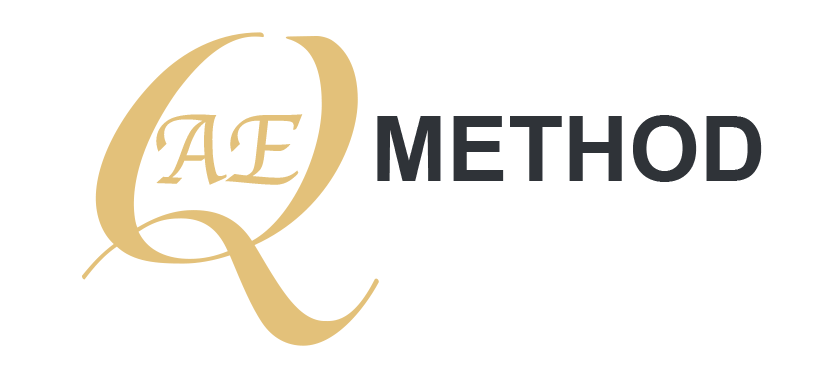Acute pain warns us of an injury or illness by sending a signal into our brain.
Most injuries influence our body tissues and the neurons in our pain system, including those inside our brain and spine, causing neuropathic pain. It occurs due to neurons that make up a kind of map for pain in our brain. Specific areas in our brain for processing information represent our body’s outer surfaces and are called brain maps. When we touch a part of the body during active exercise, a specific part of the brain map is activated, representing that part of the body. These maps of our body’s surface areas are organized topographically, which means that neighboring areas of the body are next to one another on the map. When the neurons in our map become injured, they constantly send off false alarms and lead us to believe that the problem is within our body, while, in reality, its located mainly in our brain. The body healed ages ago, but the pain system is still activated. Acute pain was given an afterlife – it became chronic pain.
Its easier to understand chronic pain development if we understand the structure of the neurons. Each neuron has three parts: the dendrites, the cell body, and the axon. Dendrites are branched like a tree and receive information from other neurons. They lead to the cellular body, which keeps the cell alive and contains its DNA. The axon is some live wire with different lengths (from microscopically short inside our brain to others that go all the way down our leg and can reach 1 meter in length). Axons are commonly compared to wires since they transfer electric impulses to their neighboring neurons’ dendrites with very large speeds (from 3 km/h to 300 km/h). A neuron can accept two kinds of signals: irritant and inhibitory. When a neuron accepts enough irritant signals, it will launch a signal of its own. If it receives enough inhibitory signals, then there is a smaller chance of sending out his signal. Axons almost touch adjacent dendrites. They are separated with a microscopic space in between, called the synapse. When an electrical signal reaches the end of the axon, it triggers a chemical transporter’s release, a neurotransmitter, into the synapse.
The chemical transporter floats to the dendrites of a neighboring neuron and irritates or boils it. When we say that neurons rebuild their networks, we want to say that changes occur in the synapse; namely, the number of connections between neurons is strengthened and expanded or weakened and reduced. So, an AEQ teacher needs to know how these changes happen inside the brain. That’s why we use proprioception and other senses for active self-stimulation of nerve cells and connections between them when working with patients, to affect the plasticity or adaptability of the brain. This way, the patients change their habits and consciousness through their understanding. They feel a change in their body and realize that they can control and change its functioning. They activate and encourage different connections and patterns and with that less painful changes of function and structure in the body. Dendrites are one of two types of protoplasmic growths that grow from the cell body, and the other is an axon. Axons usually transmit electrochemical signals, and dendrites receive them. Dendrites have a larger surface for receiving signals from other axons’ nerve tips so the chemical signal can transfer onto multiple target cells simultaneously. Myelin is a fatty substance that wraps and protects the nerves to quickly transmit impulses between the brain and various parts of the body. Myelin also contains proteins that can be attacked by the immune system and surrounds the central and peripheral nervous systems’ nerves. If the myelin in the central nervous system gets injured, it causes the symptoms of multiple sclerosis. A myelin sheath surrounds nerve cells, and the tiny space between these sheaths is called Ranvier’s clamps. When the brain sends a message down the spine’s nerves, the impulses jump from one clamp to another. Myelin prevents these impulses from leaving the nervous tissue at the wrong point.
The AEQ method aims to change accustomed movement patterns by restoring neuronal networks based on learning and conscious movement. If we do this regularly, we restore the networks in the cerebral cortex and change the parts of the conscious brain from which the patterns we want to change to improve the body’s condition emerge.
One of the fundamental laws of brain neuroplasticity is that neurons that are triggered together also form networks together, meaning that repetitive thought experiences lead to structural changes in the brain’s neurons that process that experience, with synaptic connections between these neurons becoming stronger. To put it simply, it means that different groups of neurons connect in networks when a person learns something new. Whenever any activity that connects neurons is repeated, these neurons together trigger faster, stronger, and sharper signals, and the skill cycle becomes more efficient and better. This is possible because the more times neurons are triggered together, the more myelin wraps around the axons that connect them. The connection is better and faster. Therefore, we perform somatic movements. When we repeat them with awareness, we amplify these signals, which encourages new and better habits. Even when the brain begins to execute them automatically, we need to maintain conscious control over them. The same goes for riding a bike: we consciously control automatic movements to not turn too fast into a bend. Thus, we can change the sensory-motor part of our brain, learn new skills, and become better at them. We can then use the subconscious part of our brain for skills we already know how to perform well. The reverse is also true. When a person stops performing somatic movements intentionally and consciously twice a day for an extended period, these connections weaken, and many are eventually lost as well. This is an example of a more general principle of plasticity, namely the phenomenon of “use or lose.” Often, the neurons used for this skill will take over other mental tasks that are now performed more regularly. This principle can also be managed by breaking connections in the brain that do not benefit us because neurons that are not triggered together do not connect into networks. Therefore, during active therapy and somatic movements, we perform various movements. When a client forms the wrong pattern due to sensory-motor amnesia, to stop the habitual movement, one must learn to break the connections between neurons in the areas used for that movement. This is similar to changing one switch for three lights to two or three switches for the same three lights. We can still turn on all the lights at once, but we can also turn on each separately, which we did not know/could not do before.
Brain flexibility is a very good thing if our sensory perceptions are pleasant, as it helps us shape the brain that can better perceive pleasant feelings and enjoy them. That’s why it’s important not to experience pain during exercise or movement and not to overdo it. Clients must, therefore, decide how much effort they want to invest in pandiculation. We also need to be careful not to force clients into pain or cramps, but to them just enough in the right direction to improve the skills they already have. However, this same plasticity of the brain can also be a major nuisance when the sensory system, which is constantly receiving signals, is a pain system. This can happen when a person has had a slippage of the intervertebral disc or a herniated disc, which then constantly presses on the spine’s nerve root. The pain map for this area becomes hypersensitive, and we begin to feel pain not only when the plate touches the nerve, and we move wrong, but also when the plate does not press so hard on the nerve. The pain signal travels and echoes throughout the brain, so the pain is present even when the original stimulus is gone. With the AEQ method, it is important to perform somatic movements every day for 15 to 30 minutes. We observe and compare how we feel and control the body’s movement through the vase and try to equalize the sensations and control. The movements are gentle soft, and never such as to cause pain. If it hurts, check to see if the movement is not performed by force because we want to move a part of the body more than we can relax the muscles that lengthen when performed. This then causes pain because we perform stretching, or it causes pain in the muscles that contract due to excessive contraction resulting from the non-cooperation of the muscles that are supposed to lengthen. Usually, in such cases, we feel the excessive weight of the part of the body we want to move. Through experimentation and learning, we slowly better coordinate contractions and relaxation, and perform the movement softer, easier, and more effectively. This is crucial for long-term improvement and elimination of pain. If we focus on movement, we change the pain map. As the myelin sheath thickens and nerve cells’ conductivity improves, clients find that these self-care movements increase their flexibility, ability to relax, balance, and coordination. Just as we have learned bad habits and built them into our cerebral cortex, we can do the same with good habits.
Active AEQ learning is a pleasurable and comfortable experience; patients are always shocked by how fast time went by, which means that they have learned a lot, which is the basic purpose of learning.
Albert Einstein wrote: We learn the most by doing things with such pleasure that we even fail to notice when the time passed.






